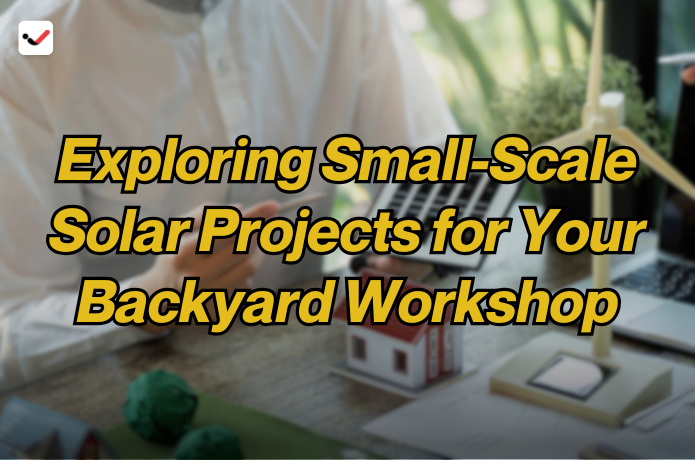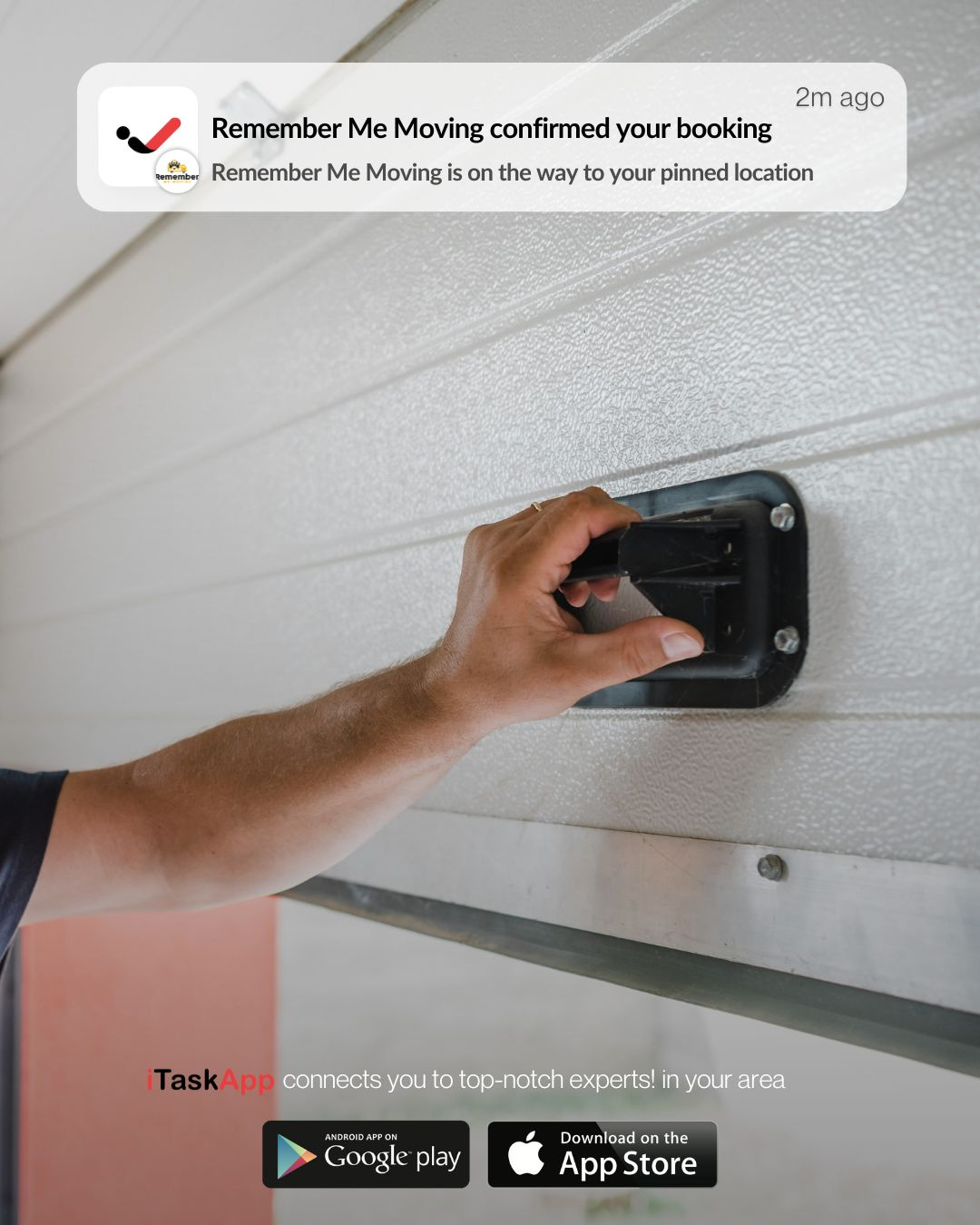Exploring Small-Scale Solar Projects for Your Backyard Workshop
Exploring Small-Scale Solar Projects for Your Backyard Workshop

A backyard workshop is more than just a space for tools. It's where ideas come to life. Whether you're building furniture, repairing equipment, or just tinkering on weekends, having reliable power is essential. But traditional electricity can be costly and unreliable, especially in remote or off-grid locations. That’s where solar power comes in. Small-scale solar energy systems are affordable, efficient, and easy to install. They can keep your lights on and your tools running, all while lowering your power bills.
As the cost of solar panels continues to fall, more people are exploring solar energy for home use. Solar panel kits are widely available and designed for DIY installation. You don't need a degree in engineering to set up a basic solar system for your workshop. With a bit of planning and the right parts, you can power your workbench with clean, renewable energy. This article covers the basics of setting up a small solar power system for your backyard workshop, from understanding your energy needs to choosing the right equipment.
Understanding Your Energy Needs
Before setting up solar panels, calculate how much power your workshop uses. List all tools, lights, and appliances you plan to use. Check their wattage and estimate how many hours each item runs per day. Add those numbers to find your daily energy use in watt-hours. For example, if you run a 500-watt tool for 2 hours, that’s 1,000 watt-hours. Knowing your power needs helps you choose the right size solar system.
Also, consider whether you’ll use your workshop daily or only on weekends. Daily use means you’ll need a system with higher capacity and battery storage. Occasional use lets you get by with a smaller setup. Either way, it’s better to overestimate your energy use slightly, so you have enough power even on cloudy days.
Choosing Solar Panels
For small solar power systems, most people use monocrystalline or polycrystalline panels. Monocrystalline solar panels are more efficient and take up less space, making them ideal if you have a small roof or limited area. Polycrystalline panels are cheaper but slightly less efficient. Either type works well for a backyard solar setup.
Look for solar panels that produce between 100 and 200 watts each. You can start with one or two and add more later if needed. The number of panels depends on your energy needs and the sunlight your yard receives. Most areas in the U.S. get enough sunlight to support small solar projects, especially in the summer.
Mounting Options
You can mount solar panels on the roof of your workshop, on the ground, or on a pole. Roof mounting saves space and protects the panels from damage, but it limits the direction and angle of the panels. Ground mounting offers more flexibility but takes up room and might require extra protection against pets, kids, or falling branches.
The angle of your solar panels matters too. For best results, they should face south (in the northern hemisphere) and be tilted to match your location’s latitude. Adjustable mounts allow you to change the angle with the seasons, which can increase power production year-round.
Solar Charge Controllers
A solar charge controller manages the power going from the panels to the batteries. It prevents overcharging, which can damage batteries, and stops power from flowing back to the panels at night. There are two types: PWM (pulse-width modulation) and MPPT (maximum power point tracking). MPPT charge controllers are more efficient and a better choice if you plan to expand your system later.
The charge controller’s size should match the amperage and voltage of your solar system. Make sure it has enough capacity for any future upgrades.
Battery Storage
Since solar panels only produce power during the day, you’ll need batteries to store energy for use at night or during cloudy weather. Deep-cycle batteries, such as AGM or lithium-ion, are common choices for solar systems. Lithium-ion batteries last longer and charge faster, but they cost more up front.
A basic setup might include one or two 12-volt batteries wired together. You can always add more storage as your needs grow. Keep your batteries in a dry, ventilated space to improve their lifespan and prevent overheating.
Inverters
An inverter converts the DC power from your solar panels and batteries into AC power for your tools and lights. Most household devices run on AC power, so this step is essential. For small workshops, a 1000-watt or 1500-watt inverter is often enough. If you plan to run large tools like saws or compressors, check their power ratings and choose an inverter with enough capacity.
Pure sine wave inverters work best with sensitive electronics and produce power that’s almost identical to grid electricity. Modified sine wave inverters are cheaper but may not work well with some devices. Stick with pure sine wave inverters if you want trouble-free operation.
Wiring and Safety
Use quality wiring, fuses, and connectors to tie your system together. Poor wiring can lead to voltage drops or fire risks. Follow manufacturer instructions closely or consult an electrician if you're unsure. Use conduit to protect outdoor cables from weather and animals. Label everything clearly and double-check connections before turning your system on.
Safety also means using the right size cables. Thicker wires handle more current and reduce energy loss. Always fuse the lines going from the panels to the controller, from the controller to the battery, and from the battery to the inverter.
Costs and Payback
A small solar panel system for a backyard workshop can cost between \$500 and \$2,000 depending on the components and how much power you need. Most DIYers can install a basic setup in a weekend. Over time, the savings on your electricity bill will help pay for the system, especially if your workshop is far from the main house and would require a long power line.
Using solar power in your workshop also reduces your carbon footprint. It’s a small step toward energy independence and sustainability. As solar technology improves, systems become more affordable and easier to expand. Even if you start small, you can always grow your setup over time.
Small-scale solar power systems are a smart, practical solution for powering backyard workshops. They are easy to build, affordable, and reduce your reliance on grid power. By taking control of your own energy source, you gain freedom, flexibility, and long-term savings. Whether you’re working with hand tools, lights, or small machines, a basic solar setup can keep your workshop running smoothly.
With careful planning, the right equipment, and a little time, you can set up a reliable off-grid solar power system that fits your needs. As more homeowners choose renewable energy, backyard solar projects are becoming more common—and more rewarding.

